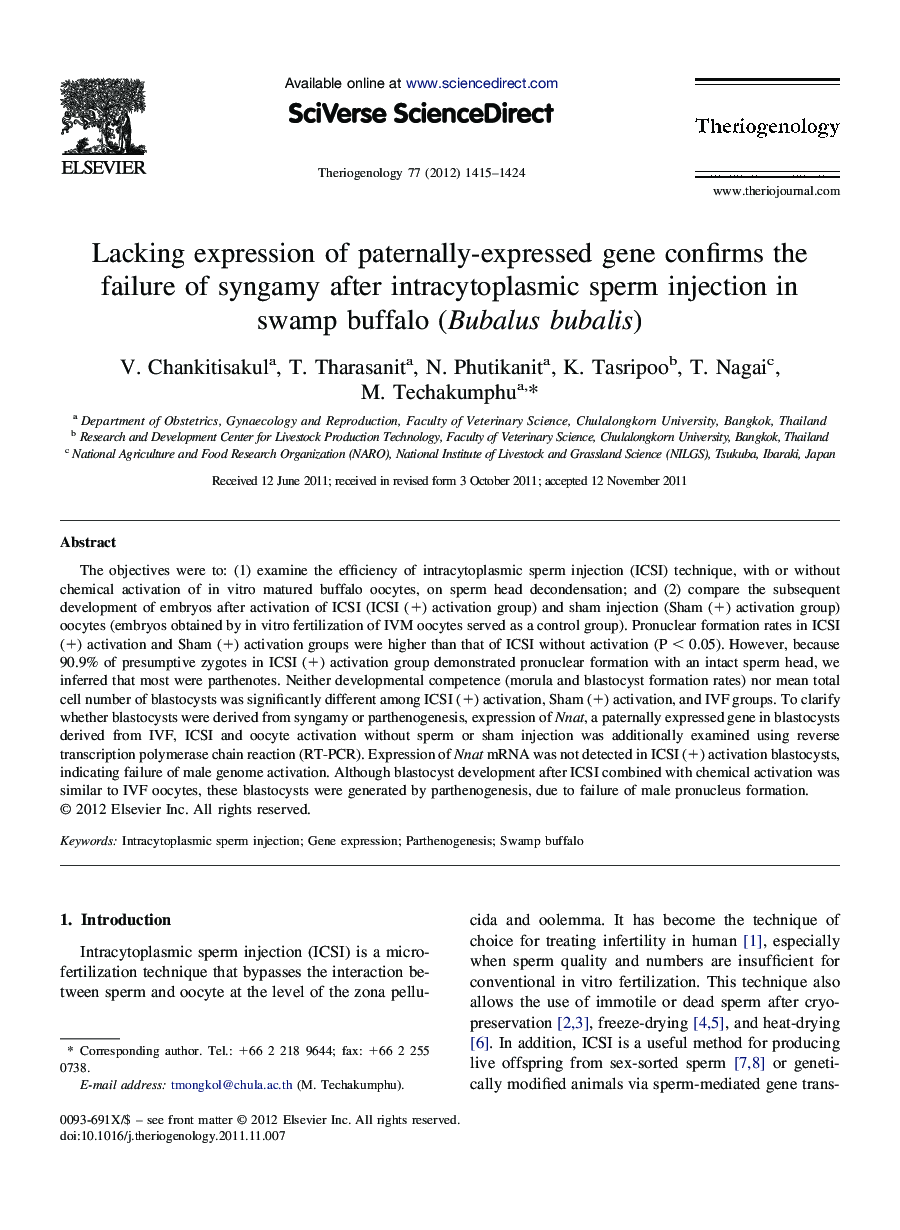| کد مقاله | کد نشریه | سال انتشار | مقاله انگلیسی | نسخه تمام متن |
|---|---|---|---|---|
| 10892339 | 1082099 | 2012 | 10 صفحه PDF | دانلود رایگان |
عنوان انگلیسی مقاله ISI
Lacking expression of paternally-expressed gene confirms the failure of syngamy after intracytoplasmic sperm injection in swamp buffalo (Bubalus bubalis)
دانلود مقاله + سفارش ترجمه
دانلود مقاله ISI انگلیسی
رایگان برای ایرانیان
کلمات کلیدی
موضوعات مرتبط
علوم زیستی و بیوفناوری
علوم کشاورزی و بیولوژیک
علوم دامی و جانورشناسی
پیش نمایش صفحه اول مقاله

چکیده انگلیسی
The objectives were to: (1) examine the efficiency of intracytoplasmic sperm injection (ICSI) technique, with or without chemical activation of in vitro matured buffalo oocytes, on sperm head decondensation; and (2) compare the subsequent development of embryos after activation of ICSI (ICSI (+) activation group) and sham injection (Sham (+) activation group) oocytes (embryos obtained by in vitro fertilization of IVM oocytes served as a control group). Pronuclear formation rates in ICSI (+) activation and Sham (+) activation groups were higher than that of ICSI without activation (P < 0.05). However, because 90.9% of presumptive zygotes in ICSI (+) activation group demonstrated pronuclear formation with an intact sperm head, we inferred that most were parthenotes. Neither developmental competence (morula and blastocyst formation rates) nor mean total cell number of blastocysts was significantly different among ICSI (+) activation, Sham (+) activation, and IVF groups. To clarify whether blastocysts were derived from syngamy or parthenogenesis, expression of Nnat, a paternally expressed gene in blastocysts derived from IVF, ICSI and oocyte activation without sperm or sham injection was additionally examined using reverse transcription polymerase chain reaction (RT-PCR). Expression of Nnat mRNA was not detected in ICSI (+) activation blastocysts, indicating failure of male genome activation. Although blastocyst development after ICSI combined with chemical activation was similar to IVF oocytes, these blastocysts were generated by parthenogenesis, due to failure of male pronucleus formation.
ناشر
Database: Elsevier - ScienceDirect (ساینس دایرکت)
Journal: Theriogenology - Volume 77, Issue 7, 15 April 2012, Pages 1415-1424
Journal: Theriogenology - Volume 77, Issue 7, 15 April 2012, Pages 1415-1424
نویسندگان
V. Chankitisakul, T. Tharasanit, N. Phutikanit, K. Tasripoo, T. Nagai, M. Techakumphu,